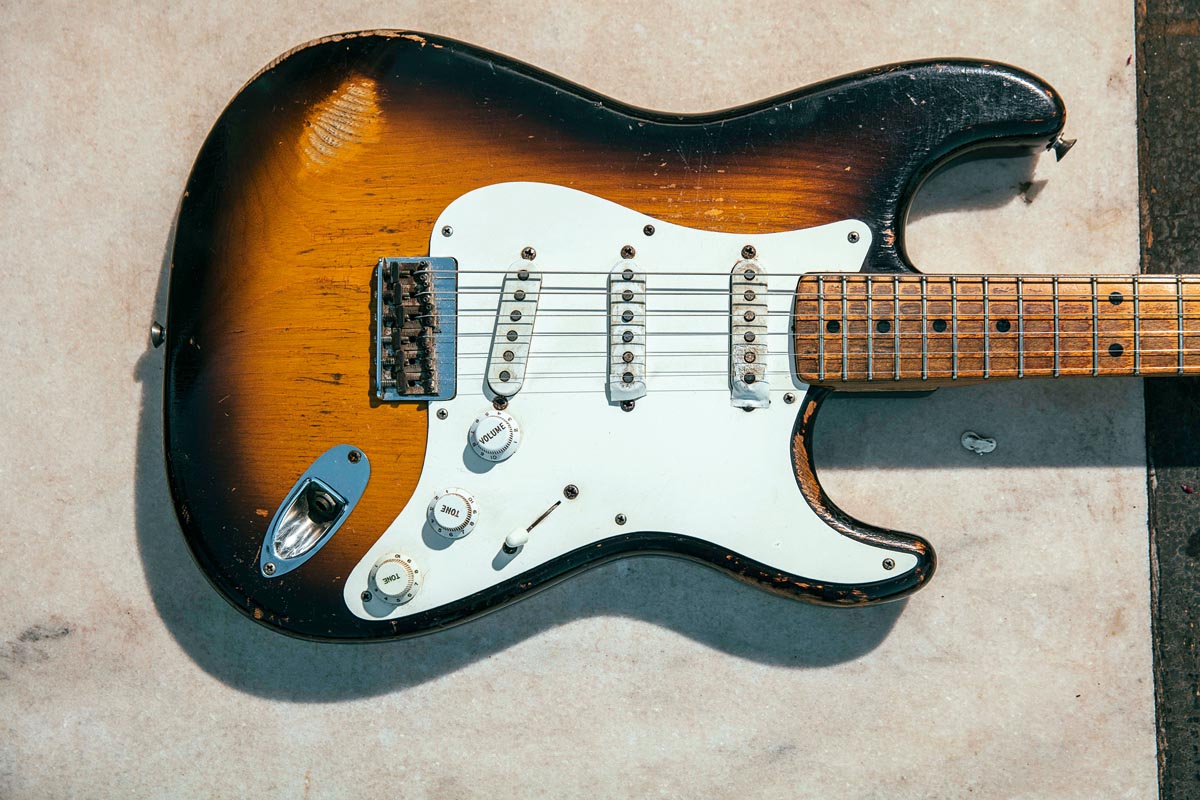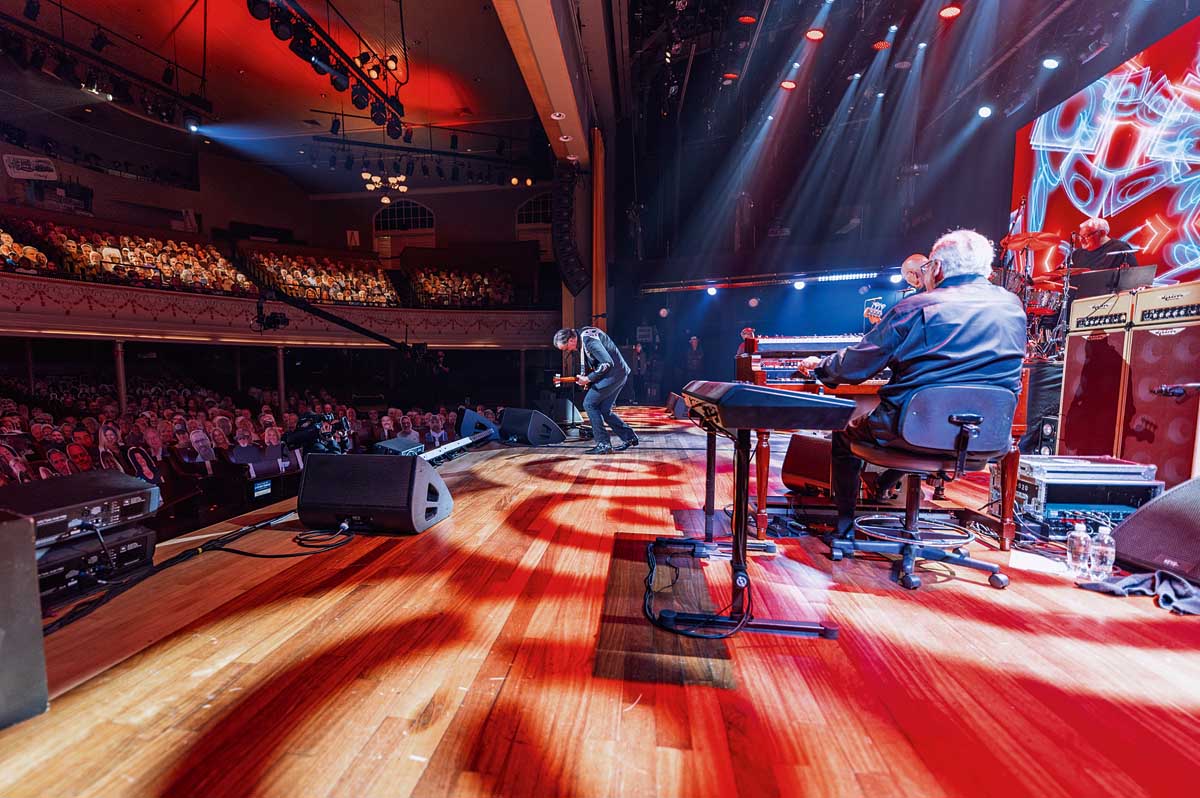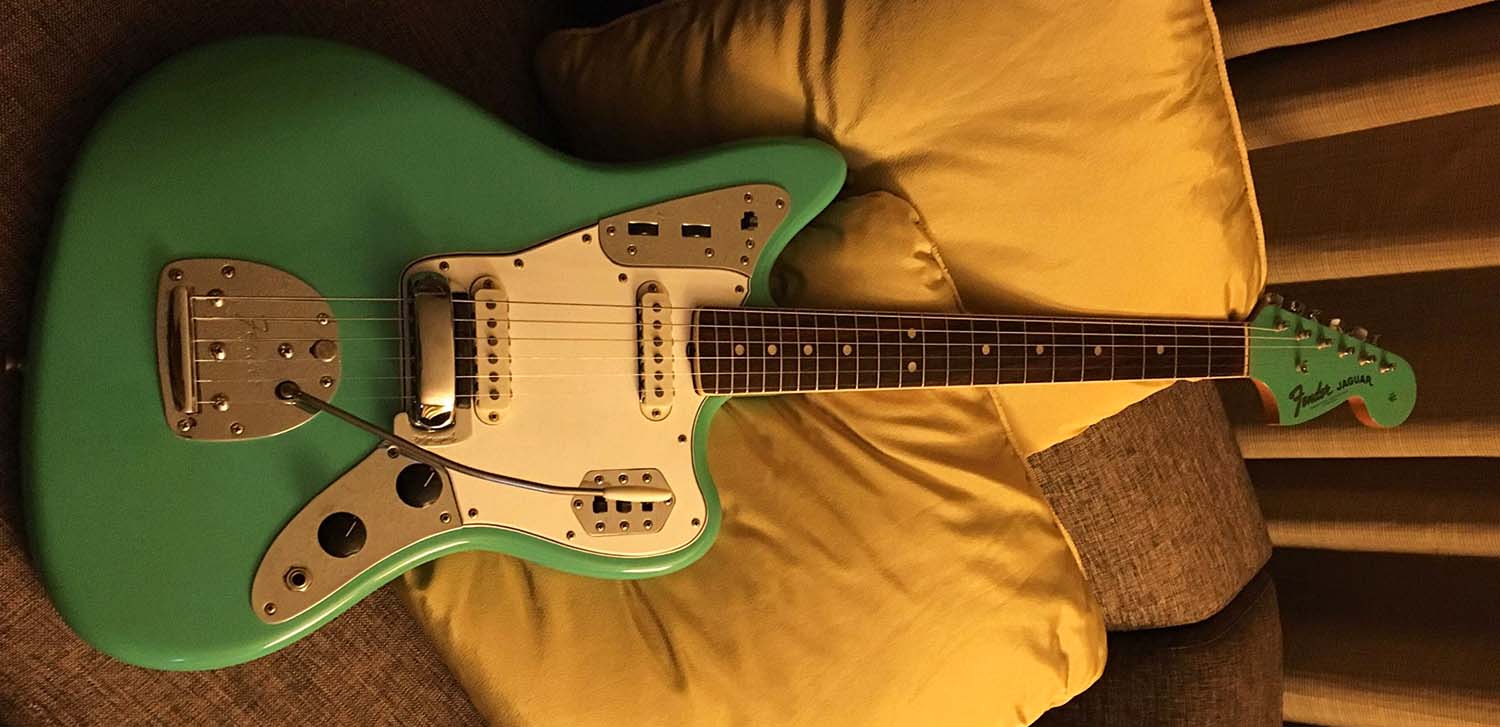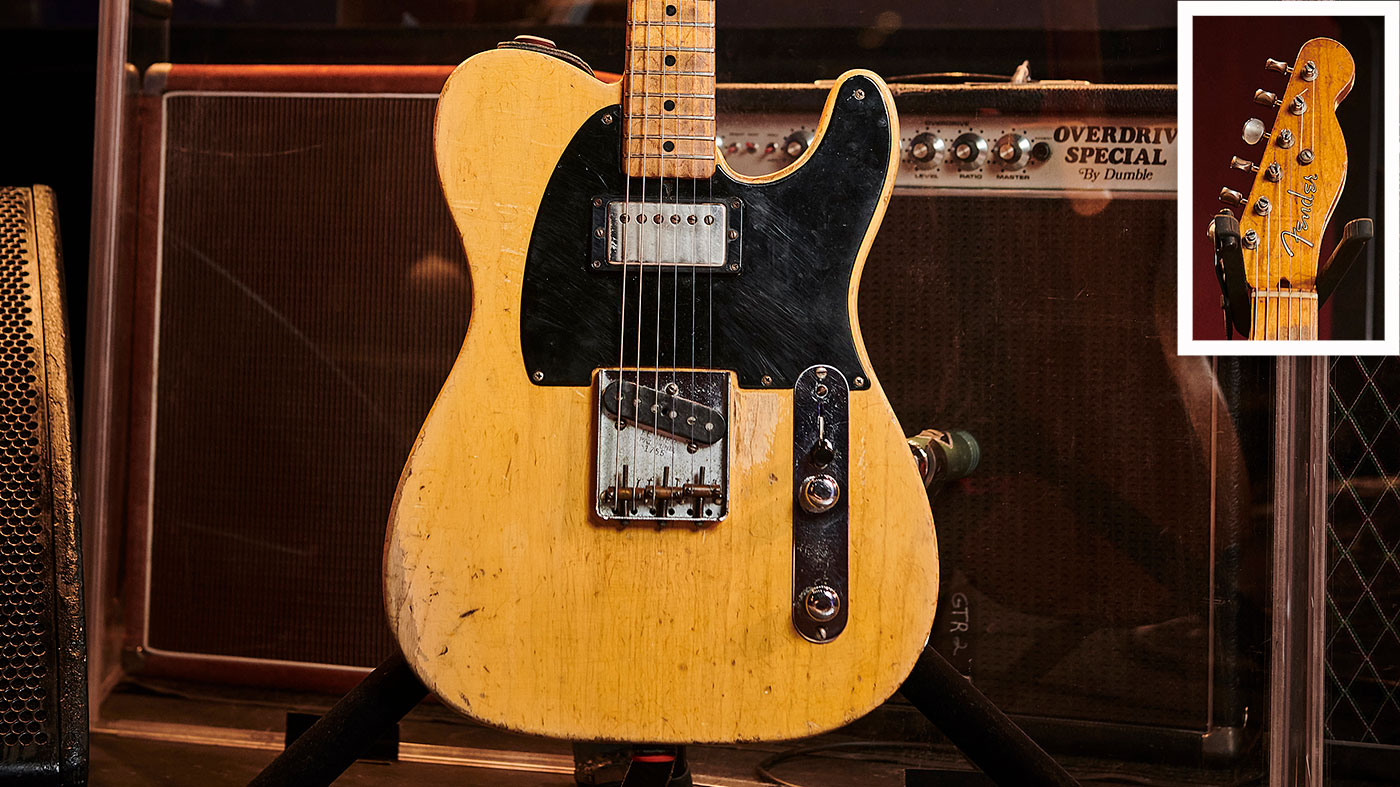Joe Bonamassa shares his greatest finds from a lifetime of buying and selling guitars
Here’s a guy who knows a thing or two about buying guitars – and it turns out he’s sold a few, too…

Every guitar player who turns up for a Bought & Sold interview has got a few stories to tell and wisdom to share, but none are as well positioned as Mr Joe Bonamassa to talk about the buying and selling of electric guitars and amplifiers.
The blues master and proprietor of Nerdville has one of the coolest guitar collections on the planet. It's not just the numbers – which are impressive – it is his focus. He knows what he likes, and that, folks, is one of the key takeaways from this one.
With his new album, Royal Tea, out on record store shelves, virtual and physical, Bonamassa recants some of his gear buying war stories, and shares some times should you be considering entering the vintage guitar market.

What was the first serious guitar you bought with your own money?
“1954 hardtail Strat, serial number 0707, $4,250. I was 13 years old. I wanted a Stratocaster with a maple neck and I’m still one of the few that is a maple-neck devotee. Eric Clapton had a live record in the '70s called Just One Night, which had a version of Further On Up The Road on it and that was really my introduction to electric blues rock guitar – and he had a black Strat with a maple neck.
“A collector buddy had this guitar, it was $6,000, and I think we gave him $4,250 and that was it. I had that guitar till I was about 18 and then I sold it and saw it come back around 20 years later, ending up in the collection of Kurt Linhof. It was pitched to me: ‘Hey do you need a ’54 Strat?’, and I go, ‘I know that guitar…’”
Most incredible find was a Tommy Bolin Les Paul, the 1960 that has the American flag on it. That’s probably the greatest bunch of detective work I’ve ever done in terms of a guitar
What was the most recent guitar you bought and why?
Get The Pick Newsletter
All the latest guitar news, interviews, lessons, reviews, deals and more, direct to your inbox!
“I got bored on a Saturday afternoon and I was feeling sorry for myself and I thought, ‘I’m here in Nashville, so I’m going to check out these music stores,’ and I bought a mid-50s Silvertone Jimmy Reed that they call the Thin Twin. So it’s this big oversize-looking thing and it’s got those razor pickups in it and it’s basically the same guitar Jimmy Reed played.
“The only reason I bought this guitar was that it was the most preserved model I’ve ever seen. They have huge necks. A lot of times they are unplayable; a lot of times they’re more wall-hangers than practical instruments. But this one played well, sounded good. That’s an interesting flavour on a record because it kind of sounds like an arch-top but it’s too bright for that, you know? It’s a good blues guitar, really.”
What was the most incredible find or bargain you’ve ever had?
“That’s actually two questions. Most incredible find – and I worked hard at it – a Tommy Bolin Les Paul, the 1960 that has the American flag on it. That took me seven years to figure out where that thing was and make a deal. That’s probably the greatest bunch of detective work I’ve ever done in terms of a guitar.
“Greatest find? Trash bag Flying V. I was there when it came out of the case. [This is the 1958 Korina Flying V that originally belonged to the late gospel musician Geno Landry and was found under a rubbish bag by Geno’s niece while clearing out her uncle’s house.]
“There’s been a couple of whoppers in the last four or five years. I mean, I bought a ’59 Les Paul: walked into backstage of the Borgata Casino in Atlantic City, brand-new condition, family owned it and it had belonged to this woman’s husband. Made a deal on the spot. I will buy something if I feel it’s undervalued but if it’s too extremely undervalued I won’t steal it. I have a barometer – that’s why I’m lucky in collecting things, I think. My karma is tight.”
Stick with what you love because one day the holy grail you paid a lot of money for can be worth zero
What’s the strongest case of buyer’s remorse you’ve ever had?
“I haven’t. I have sold guitars for spite. I had a 1960 Les Paul, had a Bigsby on. I used to call it ‘Batman’. I remember I had it 10 years ago and I was enjoying the guitar in my little music room and my ex-ex-girlfriend called me for the umpteenth time to say something or wanted me to sit on the couch and watch some sort of reality programme, which I was not interested in.
“I just wanted to play this guitar. So I put the guitar back in the case on the floor and I put the cable on the couch because I was planning on coming back… And on the way out, in my haste, my foot grabbed the cable and I watched it – almost in slow motion – as the cable came off the couch and dinged the top of this very mint guitar. I closed the case and sold the guitar the very next day.”

Have you ever sold a guitar that you now intensely regret letting go of?
“I just bought one back. About a month and a half ago a friend of mine who’s a guitar dealer said, ‘Hey, listen. Do you still have that Fiesta Red Bass VI?’ It’s part of a set of Fiesta Reds. Yes, I know I’m lucky – fuck you, Bonamassa! I have a set, I’m a guitar collector, it’s not news and I have them all: Fiesta Red Strat, Tele, you name it. I’m missing an Esquire…
“But anyway he’s like, ‘Man, the guy who sold you the bass, he really wants it – would you sell it back to him?’ I’m like, ‘Yeah, but I’m going to tag on a little shipping and handling fee because I don’t really want to sell it.’ And anyway he takes it back and he’s like, ‘Thank you so much, love you forever…’
“He really regretted selling it. You know what? The bass ended up back in the right home and he’s going to enjoy it for many, many years to come. Did I say years? I meant minutes. Five days later I took a friend of mine to Long Island – I happened to be in New York over the summer – and I went out to visit my friend Dave’s shop and I’m just sitting there and, man, that’s a clean Fiesta Red Bass VI.
I will buy something if I feel it’s undervalued but not if it’s extremely undervalued. My karma is tight
“I was actually enquiring about it because I wanted to replace the one I’d just given back to the guy feeling, you know, I did the right thing. And it’s the same bass! He had it for like a week. It’s not his fault because there was something that came in that was his dream guitar and he regretfully traded it back in. So I ended up just buying it back again.”

What’s your best tip for people buying guitars?
“Knowledge. And buy what you like. Don’t let anybody go, ‘You really should have one of these.’ Collectors or my friends will come over and they’ll be like, ‘Where are the L-5s and Super 400s?’ And I go, ‘I don’t have any. It’s not my thing.’
“Always just stick with what you love because one day the holy grail you paid a lot of money for can be worth zero. And if it’s worth zero you have to ask yourself the question, ‘Do you still love it?’ Yes. ‘Are you happy with it?’ Yes. No regrets.
“The other thing is a lot of people ask me, ‘Have you ever been conned by a fake?’ No. Why? Because I know what I’m looking at. Before I get the chequebook out I know what I’m looking at and if I don’t know what I’m looking at I’m not too proud to ask somebody.
“The people who get swindled are the ones that are going, ‘Oh my God, can you believe the deal that I’m getting? I’m stealing this. I’m going to flip it. I’m going to make lots of money on it’ Wrong! You’re going to get your ass kicked because the deals with collectable guitars of any level, any Strat from thousands of pounds to hundreds of thousands of pounds, if it’s too good to be true, it is.
“Unless you want to beat up the little old lady and then that’s on you. That’s your karma. It really is. I’ve stopped people in the middle of conversations when they’re telling stories, ‘Yeah, I found this Tweed Deluxe and she only wanted $50.’ I wouldn’t brag about that. That’s a character flaw, sir.”

When did you last stop to stare in a guitar shop window and what were you looking at?
“The last time something took my breath away guitar-wise was when I was in Australia and there was a place in Melbourne and through the window all I saw was Foam Green. And I said, ‘Tell me that’s not a Foam Green Jaguar…’ which, custom colour-wise, is unobtainable.
I can show you a $300 Japanese Les Paul knock-off that, through a real amp, sounds amazing. The amp is the most critical thing in the chain
“It’s like Shell Pink, it’s easily confused with Fiesta [Red], and Foam Green – people call it ‘Sea Foam Green’ but it’s actually Foam Green, it’s a car colour. And I was like, ‘Are you kidding me?’ Of all places, a place called Guitar Centre in Melbourne – not affiliated with the one here – and I was like, ‘Holy crap!’ I bought it on the spot. You don’t see that every day. Foam Green is unobtainium. It was mint.”
If forced to make a choice, would you rather have a good guitar and a cheap amp or a top-notch amp and a cheap guitar?
“Cheap guitar, top-notch amp. Because I can show you a six-figure Les Paul through a shitty amp that still sounds shitty. Conversely, I can show you a $300 Japanese Les Paul knock-off that, through a real amp, sounds amazing. The amp is the most critical thing in the chain.
“If you take a Squier Strat right off the rack, $299 or whatever they cost, okay? You plug it in to a high-powered Tweed Twin or a good-sounding Marshall it’s going to sound great. And you could plug the Squier Strat into the same amp or you could plug a ’57 maple‑neck Strat in to the same amp and it’s going to sound great.
“Conversely, if you have a bad amplifier that isn’t running properly or just sounds bad, you can plug a ’59 Les Paul Sunburst or a Squier Strat or an Epiphone Les Paul in and it’s going to be different shades of crap. You know what I mean? The amplifier does the heavy lifting in the sound.”

If you could chose only humbuckers or single coils for the rest of your career which would you choose and why?
“Single coils. Because I can make them sound like humbuckers with a tone knob. If you have a Strat, oldstyle wiring, you have a three-way switch. You have front, middle, lead. The original way of the old wired Strat was the two tone pots work on the front pickup and the middle pickup and your bridge pickup is full on, straight to the jack.
“If you go in there – and I’m not saying you do this to your perfectly preserved ’54 Strat – but if you go in there and you move the white lead on the switch one to the left, now your tone pot works with the bridge pickup. If you roll the tone off by half and up the gain you get a pretty reasonable facsimile of a humbucking pickup.
“You still get the noise but who cares about the noise? So you get that dark, chewy thing and then if you roll the tone up it becomes your beloved single coil again.
“Conversely, if you’re talking about a humbucking pickup it’s very rare you find them that are chimey and bright, and if they are chimey and bright chances are they need a rewind and don’t sound good full on. A Strat or a Tele is more versatile. If you need a big thick tone, if you need a bright tone, you can do it all on the control panel of the guitar.”
What’s your favourite guitar shop and why?
“I would be kicked out of the family if I didn’t say Norman’s Rare Guitars. I’ve known Norm since I was a kid. I’ve gotten some great stuff from him: there’s been custom colours, stuff you don’t know about – not every guitar I own is on Instagram, unlike what people think.
“When you buy guitars, if you’re buying them out in the wild – hitting every shop up – you’ve got to know what you’re looking at. You’ve got to vet it yourself.
“Norm does the vetting for you. If it passed the Norman test then you’ve got a real guitar. He discloses every issue: ‘I think that screw may be changed.’ He tells you everything that you need to know going into the thing, so this way you have information and you have the ability to make that decision.”
- Joe Bonamassa's new album, Royal Tea, is out now via J&R Adventures.
With over 30 years’ experience writing for guitar magazines, including at one time occupying the role of editor for Guitarist and Guitar Techniques, David is also the best-selling author of a number of guitar books for Sanctuary Publishing, Music Sales, Mel Bay and Hal Leonard. As a player he has performed with blues sax legend Dick Heckstall-Smith, played rock ’n’ roll in Marty Wilde’s band, duetted with Martin Taylor and taken part in charity gigs backing Gary Moore, Bernie Marsden and Robbie McIntosh, among others. An avid composer of acoustic guitar instrumentals, he has released two acclaimed albums, Nocturnal and Arboretum.
“I used to weigh my guitars and use the heaviest one. As I’ve got older and my back’s got worse, lighter guitars are definitely better”: Lee Malia’s Jackson signature completes a full circle 20 years in the making – and it redefines what a Jackson can be
“Sonically excellent… we found that it could be a viable substitute for our vintage 1970s pedals”: Hamstead x That Pedal Show Redwing Analogue Stereo Modulator review


![John Mayer and Bob Weir [left] of Dead & Company photographed against a grey background. Mayer wears a blue overshirt and has his signature Silver Sky on his shoulder. Weir wears grey and a bolo tie.](https://cdn.mos.cms.futurecdn.net/C6niSAybzVCHoYcpJ8ZZgE.jpg)

![A black-and-white action shot of Sergeant Thunderhoof perform live: [from left] Mark Sayer, Dan Flitcroft, Jim Camp and Josh Gallop](https://cdn.mos.cms.futurecdn.net/am3UhJbsxAE239XRRZ8zC8.jpg)






